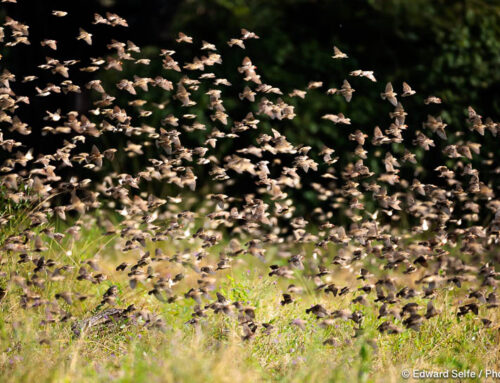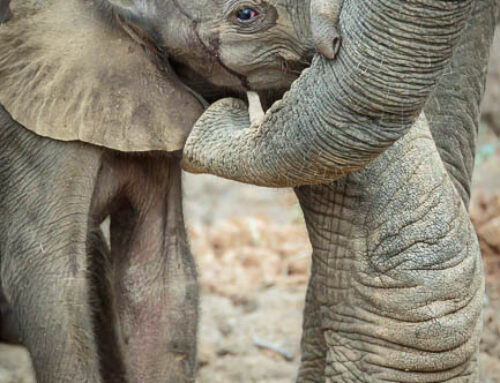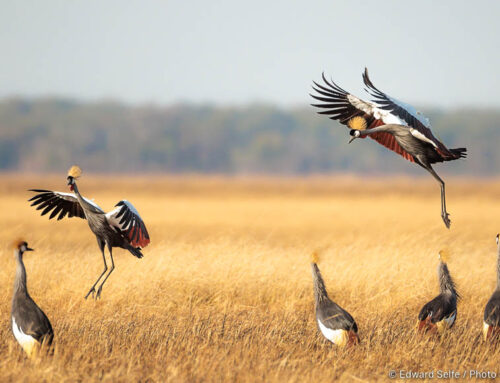We have a huge area for our own use, inhabited by the full range of game that Luangwa offers, including a number of the less-well-known species such as Caracal, Serval, Hartebeest, Reedbuck, Common Duiker and Sharpe’s Grysbok. We have had encounters with lion and hyaena on walking safaris, I have found a leopard sniffing around my tent when I headed to bed recently, and elephants are to be found more and more in the sandy river-bed which runs past the front of camp.
However, much as we love our area, we do also love to go exploring. I have led a number of all day safaris from Nkhonzi this season, including a particularly memorable one with the Vargas family from N California.
I haven’t always taken my camera with me this season, preferring to keep my eye on the road and the surroundings since I don’t yet know either as well as I knew the area where I guided before. But on this day, I took it along and I’m very glad that I did!
The day started out with a surprise Tawny Eagle which erupted from behind a tree in front of us and sat on a low branch across the road in front of us. We assumed that it had been eating something but we had a look behind the tree and couldn’t see anything.
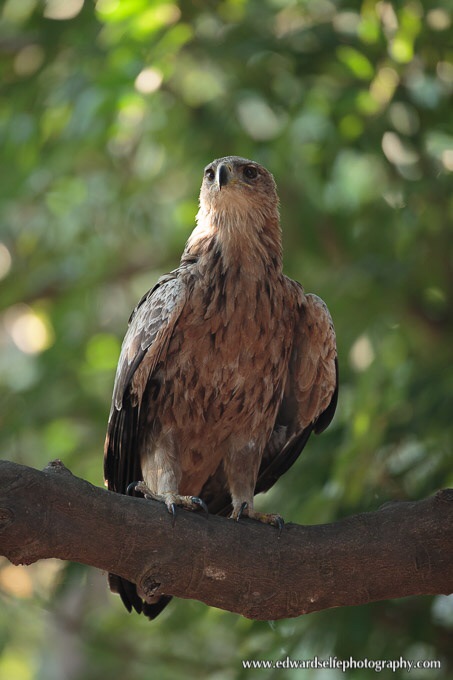
After checking us out for a while, the eagle took off over our heads and looped around before landing in a tree in the morning sunshine. Large birds such as eagles take a long time to warm up in the mornings, so are often rather clumsy in flight until the sun has warmed through their insulating feathers and reached the muscles below.
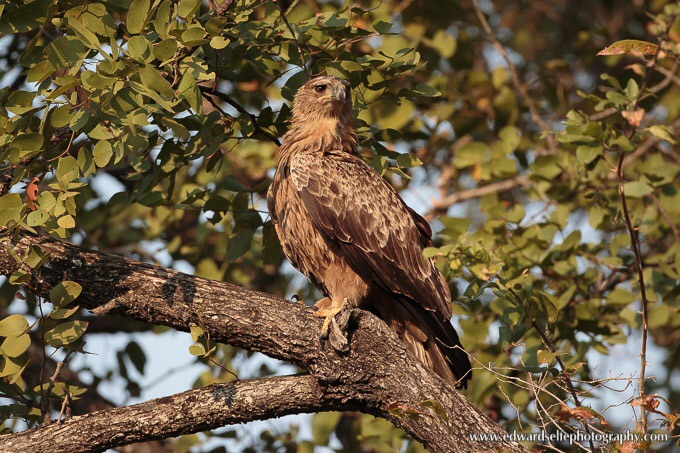
Later on in the day, we enjoyed a happy 10 minutes watching a Slender Mongoose hunting in the broken ground left by the activities of hippos and elephants in flooded pools during the rains. Offering a refuge for the eggs of nesting birds, a mongoose can often find a tasty meal. Searching in the cracked ground might reveal a dormant centipede which makes a good dessert.
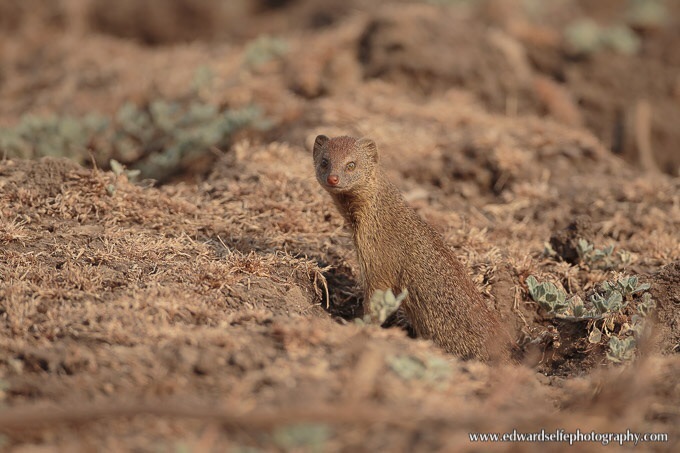
After a long lunch break resting in the shade, we saw elephants beginning to head to the water’s edge for a drink. We hoped that they might bathe in the water too, so we loaded up and moved the vehicle to get into position. The afternoon light was developing a beautiful golden hue by this time which beautifully illuminates all the details of an elephant’s tough skin.
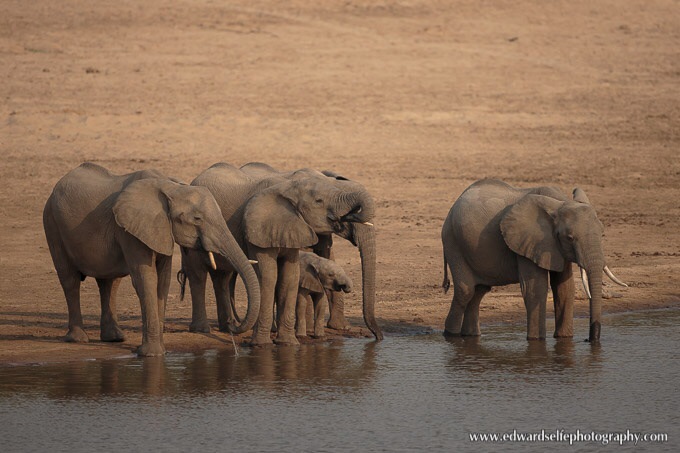
We turned and headed towards camp, finding a suitable spot to enjoy the sunset along the way. Conveniently, my chosen lagoon had a resident hippo – who was feeling the pinch as his waterhole dried up – and was not too pleased to see us. A couple of threat-yawns, displaying sizeable dental weapons, reminded us that the gin and tonic was only getting warmer in the coldbox and we retreated…
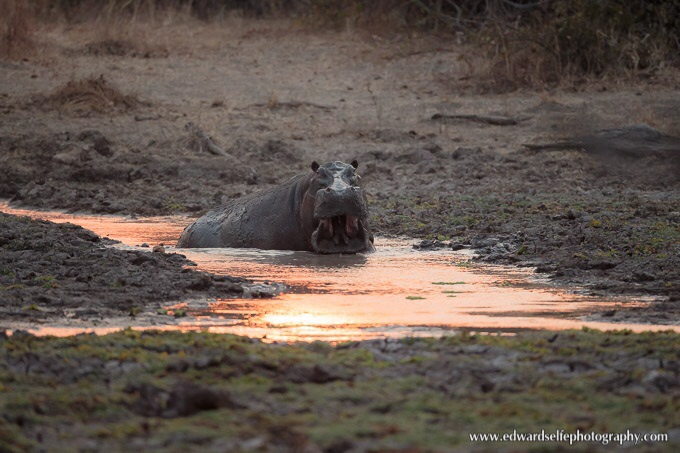
After a great day, we decided to head back to camp. But as we were moving away from that area Dickson, our spotter, noticed something small in the bush on his side of the vehicle. We reversed and he realised that he’d seen a young leopard cub which was just beginning to move around as the light fell. Initially he was very shy running back into his bush every time we started the engine or moved in the vehicle. But, by using a red filter on the spotlight, and approaching very slowly over the course of an hour, we managed to get very close to him – in fact, by the end, he was approaching us, sniffing the vehicle, checking us out and allowing his curiosity to get the better of him. Occasionally we would take off the red filter to allow some nice photos, and after the inital surprise, he didn’t even seem to mind that!
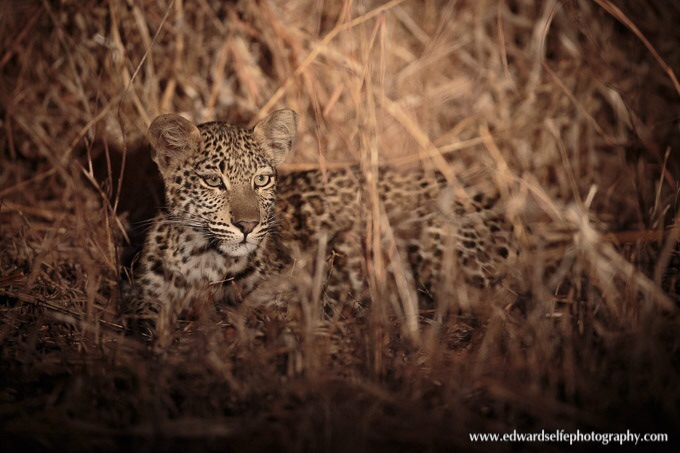
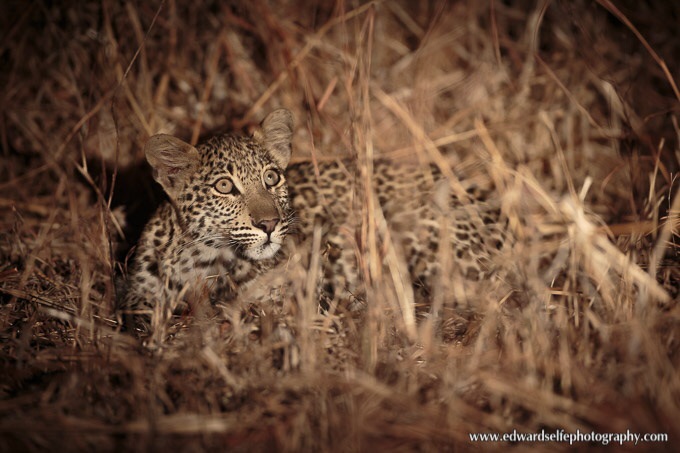
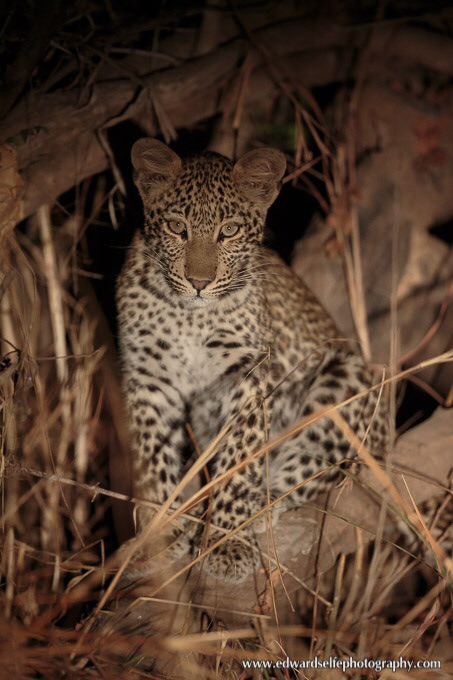
I estimate this cub to be between 2 and 3 months old (eyes are no longer blue, adult-coloured coat is developed, but it’s not yet accompanying mother on hunts or being left in a tree which is more common in the older leopard cubs that I have watched.
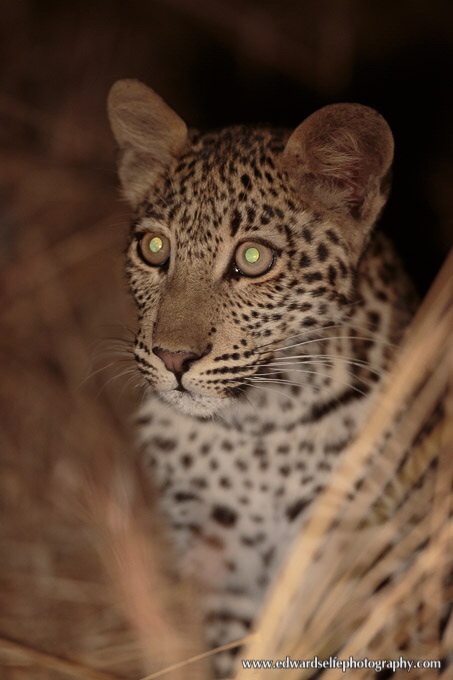
It was a joy to watch him over an hour and chat about his behaviour. It seems crazy to leave something so vulnerable alone in the bush. But many mothers in nature choose to do this over risking having the youngsters accompany her when she’s hunting/feeding. Puku, Bushbuck, Lion and Leopard all follow this practice, leaving the young hidden somewhere while going to feed and then returning to suckle them later. Herd animals such as Elephant and Wildbeest have to give birth to more precocious young which can quickly stand and then move with the herd. Creatures which form communal dens, such as Hyaenas and Wild Dogs have the luxury of leaving the females at the den with the pups while the rest of the pack go hunting. They then return to regurgitate lumps of undigested meat for the females and youngsters. Each way has its merits and has been decided upon by natural selection for ensuring the highest survival rate of youngsters.

